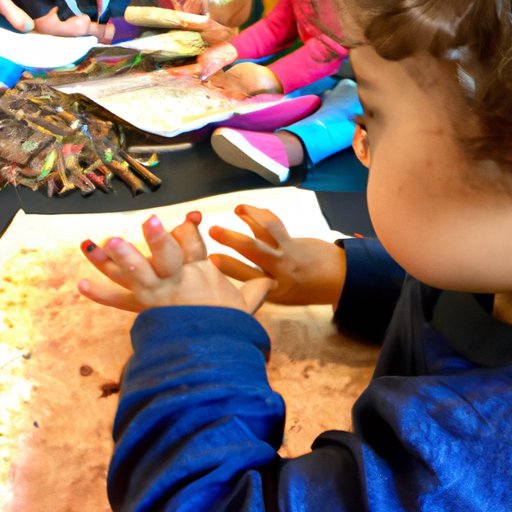
Exploring Waldorf Education: A Comprehensive Guide for Parents and Educators
As a parent or educator, it is essential to consider the right kind of education that best suits the child’s developmental needs. However, choosing the right educational approach can sometimes be overwhelming, and there are several available options. In this article, we’ll take a closer look at Waldorf education, a unique educational approach that emphasizes children’s creative and holistic development.
A history and overview of Waldorf education
Waldorf education began in Germany in 1919, created by Austrian philosopher and scientist, Rudolf Steiner. Steiner’s goal was to design a curriculum that would integrate the arts and humanities into traditional academic learning to promote the child’s overall growth and intellectual development.
Waldorf education revolves around age-appropriate learning, where children are taught according to their developmental stages. The curriculum is designed to support the child’s growth and understanding of the world around them. Unlike traditional education, which primarily focuses on academic achievement, Waldorf education emphasizes creativity, imagination, and experiential learning.
Over the years, Waldorf education has evolved to reflect changing times and modern developmental needs. Today, Waldorf schools are present throughout the world and remain committed to providing students with a robust education that nurtures both intellect and creativity.
The benefits of Waldorf education
One of the most significant advantages of Waldorf education is its focus on creativity and the arts. Waldorf schools strive to nurture every child’s creative potential, whether it’s through music, painting, storytelling, or drama. Students are encouraged to express themselves through a range of mediums, which helps to develop their imagination and creativity.
Another benefit of Waldorf education is its emphasis on experiential learning. Children learn through doing, and Waldorf schools incorporate real-life experiences into their curriculum. For example, instead of learning about science solely through textbooks, students might plant a garden, observe the plants grow, and conduct natural experiments with the environment. This type of learning fosters an awareness and appreciation of the natural world, as well as critical thinking and problem-solving skills.
Waldorf education also places great importance on community-building and social responsibility. Schools often organize community events and promote a sense of social responsibility among their students. Children are taught to develop empathy and compassion towards others, which helps to promote social cohesion and a cooperative learning environment.
Lastly, Waldorf education aims to equip children with the skills necessary for future personal and professional success. Waldorf students are taught to think creatively, critically, and independently. They learn to communicate effectively and work collaboratively with others. These skills are essential for future success in any chosen field.
Spotlight on a Waldorf school
One Waldorf school that stands out is the Kimberton Waldorf School located in Phoenixville, Pennsylvania. Kimberton Waldorf School is recognized for its unique approach to education, which emphasizes the integration of the arts into all core academic subjects. Students are taught according to a progressive curriculum, and the school’s approach to education nurtures the child’s intellectual, artistic, and emotional development.
Kimberton Waldorf School’s students have achieved significant accomplishments, both academically and creatively. The school has a strong track record of preparing students for college and life beyond. It also equips children with the skills and life-lessons necessary for success in today’s world, such as leadership, social responsibility, and global awareness.
Waldorf education vs. traditional education
Waldorf education differs significantly from traditional education. While traditional education functionality concentrates on academics, Waldorf education emphasizes a holistic approach, focusing on the student’s overall well-being. The Waldorf curriculum focuses on creativity, imagination, and experiential learning, with an emphasis on developing critical thinking, problem-solving, and social skills.
Waldorf education is also comprehensive and interdisciplinary, with an emphasis on integrating art and narrative throughout its curriculum, including the sciences, math, literature, history, and social sciences. Traditional education follows a more structured curriculum, focusing on preparing students for academic success.
In terms of assessment methods, Waldorf education does not place much emphasis on standardized tests or grades. Instead, teachers focus on each student’s progress in all areas of development- intellectual, artistic, social, and emotional.
Finally, the training required for Waldorf teachers is distinct from that of traditional teachers. Waldorf educators undergo extensive training to learn and implement the unique Waldorf curriculum.
Parenting and Waldorf education
Parents can play a crucial role in supporting their child’s education by incorporating Waldorf principles into their home life. One way is to promote imaginative play and creative expression, encouraging children to explore, play, and experiment with the world around them.
Another way is to introduce natural materials and activities into the child’s environment, such as wooden toys, natural fabrics, and non-toxic art supplies. This allows children to connect with nature and develop an appreciation for the earth.
Additionally, supporting children’s emotional and social development is essential in the Waldorf approach to education. Parents can encourage social interaction by scheduling playdates and other social activities that allow children to interact and learn from their peers.
Conclusion
Waldorf education provides children with a unique and holistic approach to learning. With its emphasis on creativity, imagination, experiential learning, and social responsibility, it equips children with the skills necessary for success in all areas of their lives. Its comprehensive curriculum, interdisciplinary approach, and emphasis on a child’s overall well-being make it a viable and valuable educational option. By considering Waldorf education as an alternative to traditional education, parents and educators can give children the best possible chance to develop all of their potential.




